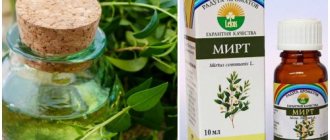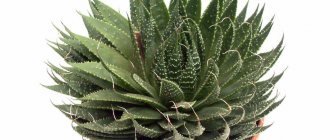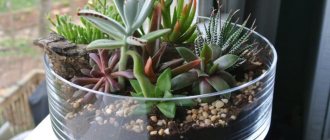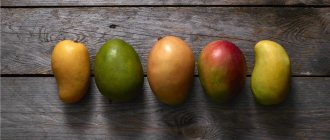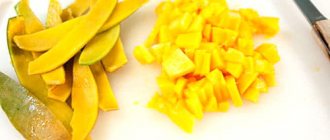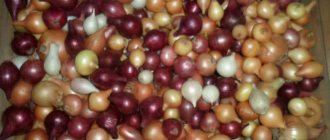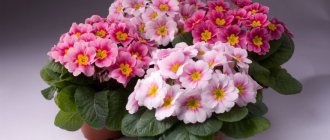What kind of exotic plants do restless flower growers grow on their windowsills? Lemon, orange, tangerine, pomegranate, persimmon, and avocado trees in flower pots and tubs no longer cause surprise. Many people try to plant mangoes. There are positive examples, but you need to take into account that a seedling grown from a seed will not bear fruit: it must be grafted (this is how varietal seedlings are prepared in nurseries). But as a decorative foliage indoor plant, mango can well decorate the interior of spacious residential and office premises.
In the southern regions, heat-loving trees are often used in the summer as spectacular natural design elements of open terraces, loggias, and patios.
Indian mango (Mangifera indica L.) is an evergreen tree that grows in the tropical rainforests of America and Africa, cultivated on an industrial scale in India, Pakistan, Indonesia, and Asian countries (China, Vietnam, Thailand). In nature, the plant can even reach 45 meters in height (usually 10-20 m). Grown at home, taking into account the obligatory crown-forming pruning, as a rule, does not exceed 2 m.
How does mango grow?
In the humid tropics, the trunk height is up to 30 m (in an apartment up to 3 m), the crown girth is up to 10 m. The foliage is elongated, up to 5 cm wide, dark green. Young leaves are glossy with a yellow-green tint.
Flowering occurs from February to March, the inflorescences are often yellowish in the shape of a pyramid, containing hundreds to thousands of flowers. The length of the inflorescence is sometimes up to 40 cm. The aroma of the inflorescences is reminiscent of lilies.
The tree is very durable, the fruits are large (sometimes up to 2 kg each). The ripeness of the fruit can be determined by its color. Its skin is smooth and thin and can be of various shades: yellowish-red or green, often tri-colored mangoes.
The ripeness of the fruit affects the pulp, which can be soft or fibrous. The fruit has a large hard stone inside. The fruits are shaped like an egg with a sweet taste.
Now there are more than 500 varieties of mango trees, they are different in shape, size, different inflorescences, colors and taste of fruit. Dwarf mangoes are cultivated on plantations. The trees have proven themselves well, so these varieties are easier to grow at home.
Landing rules
Make a small hole on the surface of the soil into which the seed is placed, root down. If it has not been previously germinated and the root is poorly defined, plant it with the long side (rib).
It is considered correct not to bury the seed completely, but to leave about a third outside, as in the photo
After planting, water the soil and place the pot away from direct sunlight - they are detrimental to tender seedlings at the initial stage of growth. To speed up the germination process, greenhouse conditions are necessary: high humidity and constant temperature. To do this, cover the container with plastic wrap or a glass jar (seed only). The cover is removed regularly, every other day, for 15 minutes for ventilation.
As soon as a shoot with real leaves appears, the “greenhouse” is removed
The tree grows quickly. On a thin shoot, long leathery green leaves appear one after another, although the very first of them first have a purple tint.
Location and lighting
Growing mangoes requires certain rules:
- For the rapid growth and development of a mango tree, you need to choose the most illuminated place in the house (apartment) - this is the main thing.
- The pot must be large; the root system of the plant develops at a rapid pace. Mango loves the sun very much, so a lack of light will lead to various diseases.
- The optimal temperature during the year should be from +20o C to +26o C; deviations from the norm can have a detrimental effect on the development of the plant. In winter, minimum + 18 degrees Celsius.
Application
Animals should not be fed mango leaves due to their high content of essential oils. Burning mango leaves releases toxic gases that can cause eye and lung irritation. Mangoes are eaten at any stage of ripeness. In the East, unripe mangoes are pickled in oil with salt and spices. Unripe fruits are used to prepare side dishes for meat and fish dishes.
The substances contained in the ripe fruit strengthen the heart, improve brain function, and are good for vision, pancreas, kidneys, and digestive tract. One mango contains almost half of the daily fiber requirement. Mangoes are eaten fresh and canned. In Indian medicine, practically all parts of the mango tree are used - fruits, seeds, flowers, bark.
Currently reading:
- How to grow Chinese cabbage in open ground
- Using hydrogel in open ground for plants
- Increased potato yield using Dutch technology
- Timely application of dolomite flour for the harvest
Share the news on social networks
About the author: Lyudmila Vasilievna Nosikova
Agronomist of the state agricultural enterprise "Garovskoe" of the Khabarovsk region of the Khabarovsk Territory.
Humidity and watering
At home, mangoes need moist soil in order for the tree to create its usual tropical climate. It is necessary to water generously 1-3 times a week with warm water. The soil should dry out slightly between waterings. In winter, reduce watering. Spray the tree regularly, especially in winter.
During the flowering period, reduce watering as much as possible. But pay special attention to the numerous leaves at this time; they may droop if there is a lack of water.
After harvesting the fruit, watering should be increased again so that the plant can quickly regain its strength and continue to grow. Maintain moisture in moderation, this is important for young trees, they do not like dry soils.
Excess dampness is also contraindicated, but dry air can also cause harm. Average humidity in the room is required.
Mango tree - home decoration
Is it possible to grow a mango tree from a seed at home? Of course, if you have time and patience.
The efforts spent will pay off handsomely: a luxurious tree will not only decorate the house, but also improve the atmosphere and have a beneficial effect on the health and mood of all family members.
Top dressing
To form a beautiful crown of a tree, we need to fertilize it in early spring - this is a time of rapid growth. Organic fertilizers should be added to the soil once every 2 weeks: in spring and summer. Additionally, 3 times a year you can feed with microfertilizers.
Mangoes should not be fertilized in autumn. For the proper development of the tree, it is better to choose the right balanced fertilizer, then the plant will delight its owners with delicious fruits.
Preparing the soil for the embryo
Before planting a seed, it is advisable to prepare the soil in advance and choose a spacious container. It is better to immediately choose a large pot so that the root system does not suffer. The bottom is lined with drainage. The substrate is placed on top.
The soil selected is light, with a neutral pH level. You can also use universal primer. Special instruments will allow you to determine its acidity.
Reproduction and care
Previously, mangoes were propagated by seeds or grafting. Plants are grafted only in summer, which guarantees results. Any soil will do, but the soil must be loose and have good drainage.
10 best frost-resistant peach varietiesWinter-hardy varieties of apricots: the best, tasty, frost-resistant varieties
- How to plant trees in the fall: timing, planting stages and varieties
The grafted young tree tries to bloom early and bear fruit, but the panicle with flowers must be cut off after full bloom. It will be possible to leave the inflorescences only after 1-2 vaccinations.
Trim the plant by 1/3 in the spring, and pinch the tops so that it bushes better. But pruning delays flowering. Transplantation is possible in the spring.
Methods for germinating grain
- An embryo. If the shell was removed without damaging the embryo located in it, then the extracted contents of the seed must be treated with a fungicide solution . This preventive measure will prevent infection with a fungal disease. We take the embryo that is strong, elastic and dense, without signs of damage, spoilage or rot.
- A bone. If you couldn’t quickly and easily split the seed, you can germinate it in a glass of water. This process is much longer, but there is no risk of deforming the embryo when opening the bone. Place the prepared seed in a container filled with warm water and leave for the sprout to germinate. Filling the glass with fresh water must be done at least every other day, otherwise it may turn sour and the sprouted seed will be ruined. A sprout will emerge from the seed in twenty days.
Container for seedlings. The mango tree has a very branched and powerful root system, so the container, pot or flowerpot must be of the appropriate size. But you shouldn’t immediately plant the sprout in a large pot. The future tree can be replanted two or three times using the method of transshipment with an earthen lump.
The first pot for planting the embryo should be up to 20–30 cm deep so that the root system can develop and germinate safely. With subsequent transfers, the volume of the pot must be increased.
The bottom of a ceramic pot or flowerpot is first covered with expanded clay gravel, creating excellent drainage, and then covered with prepared soil.
The soil. Specialized flower shops offer a variety of nutrient-rich soils for growing mango trees, originally intended for planting indoor plants. But you can also create such soil yourself by mixing garden soil with humus or compost. It wouldn’t hurt to add a small amount of river sand. The main requirement for the soil is a neutral acidity level.
Bloom
Yellow-green or red flowers are collected in racemes and can be seen from December to the end of April. Fruits require pollination. Fetal development 3-6 months.
Important! The first harvest of fruit is minimal, so the young tree protects itself from complete depletion, but there will be a few of the largest fruits. Every year the harvest will grow.
Opening the bone. Seed extraction.
Remove the fresh seed from the ripe fruit. For this purpose, the fruit is cut, the kernel is cleaned and washed well. Next, you can try to remove the seed. We do this with a knife very carefully. The seed resembles a large bean. There may be several embryos. We choose the smoothest, greenest one. It will germinate for sure.
It is better not to break the hard shell, otherwise the sprouts may be damaged. Place a bone that is too hard in a jar of water and place the container in a warm place. We change the water periodically.
This method is also suitable: place the seed in a slightly moistened towel, and then again in the heat. When the embryo germinates, it can be planted in a pot.
Dangerous pests and diseases
Spider mites are a big danger for tropical trees. Their sign is the appearance of a cobweb. The cause may be high temperature and lack of humidity. In warm weather - thrips, which feed on the sap of leaves. This can be seen by changes in color or discoloration of the leaves.
What work needs to be done in the fall to prepare fruit trees for winterPlanting and replanting trees in autumn: recommendations from experienced gardeners
What are the benefits of pomegranate for health and immunity?
Common Mango Diseases:
- powdery mildew - white coating on leaves;
- bacteriosis - spots on leaves;
- anthracnose
Dry air will turn the tips of the leaves brown. And when it gets cold, the flowers will simply fall off.
